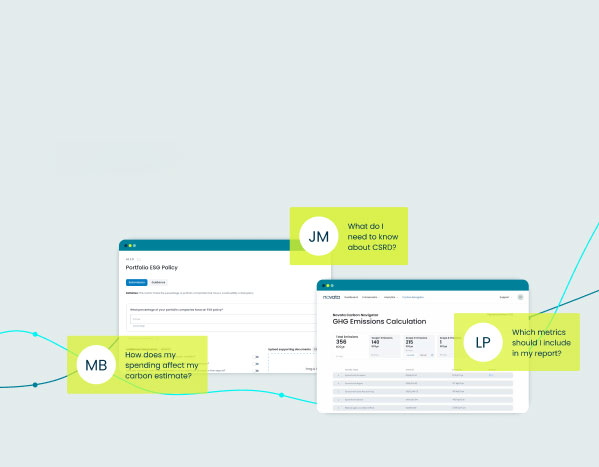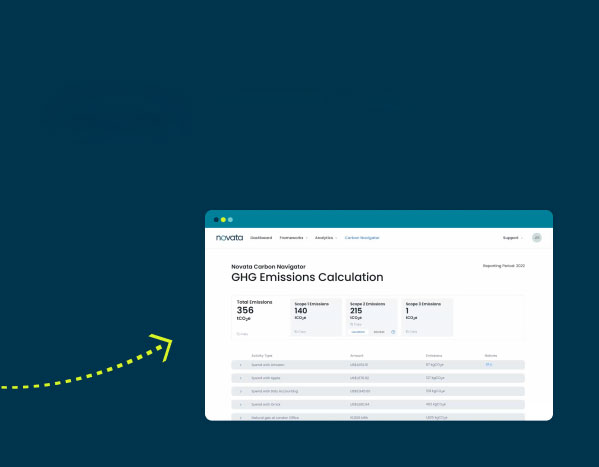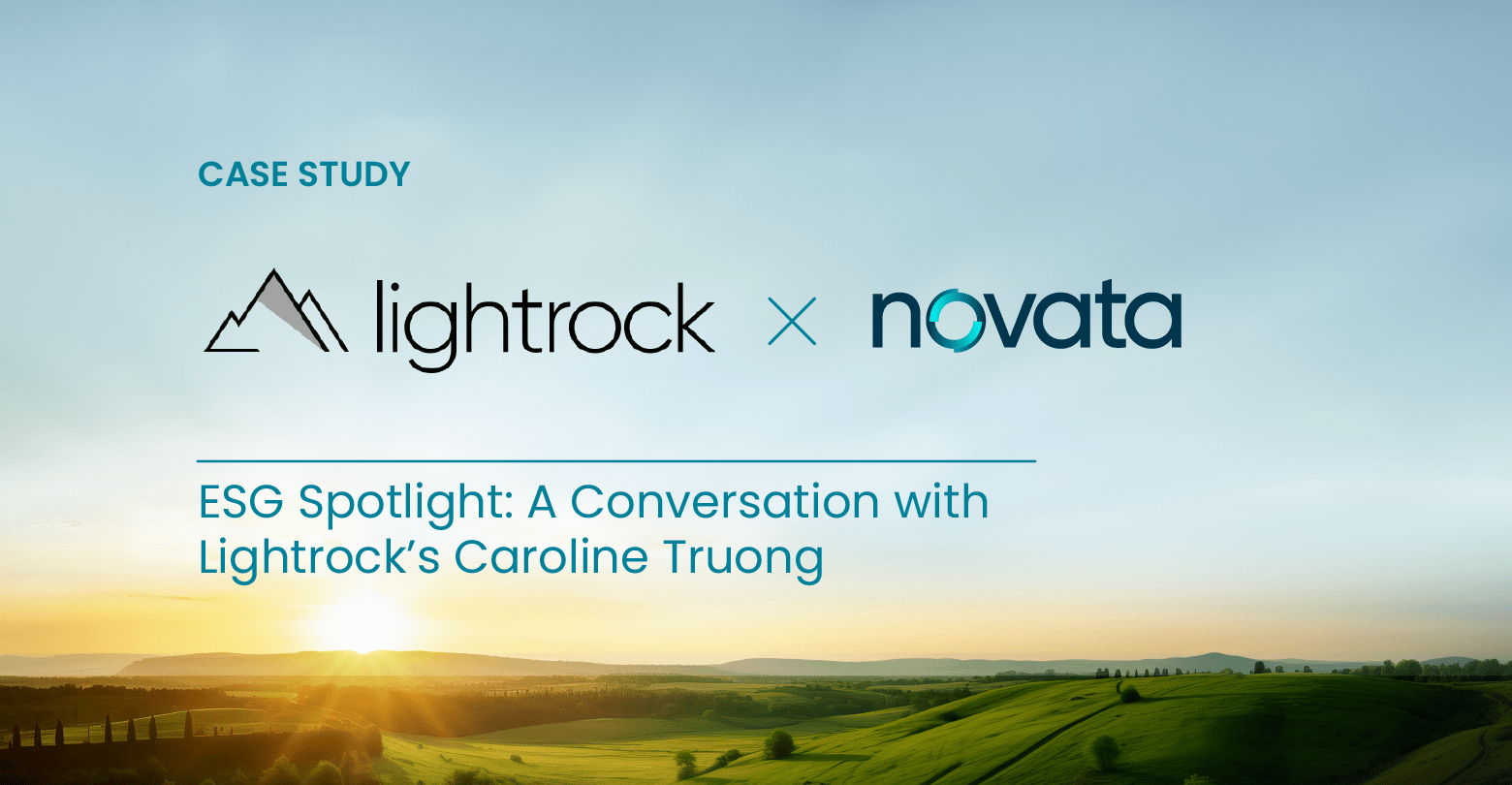In a traditionally opaque reporting landscape, ESG benchmarks are an essential tool for private market investors analyzing data from portfolio companies. ESG benchmarks provide necessary context to help investors and portfolio companies understand what their data means and how to act on it.
Novata recently launched Novata Benchmarks, the private markets’ broadest collection of ESG benchmarks. With 50 universal benchmarks and more than 200 sector-specific benchmarks for the 2022 reporting period, this release provides investors with critical insights to move the needle on the metrics that matter.
Harry Mallinson, Head of Data Science at Novata, has played a fundamental role in the development of Novata Benchmarks. In this Q&A, he shares more about the launch, the value of ESG benchmarks for private markets, and the future of data analytics at Novata.
Q: Novata’s ESG benchmarks are specific to private market performance. Why is this critical?
A: ESG data can be very hard to understand without context. For example, what does it actually mean that a company has emitted 100 tonnes of CO2 equivalents? A good benchmark helps to give that context so you understand where you need to improve — or where you’re leading the pack.
Private markets have historically had a challenge getting a handle on this data. While public companies release ESG data that is relatively easy to access, private markets are more opaque. We’ve seen various workarounds, such as benchmarking against public company data or web scraping. But there are economies of scale, behavioral patterns, and regulatory pressures present in the public markets that look very different in the private markets. That’s why it’s important that Novata Benchmarks are from the private sector, for the private sector. With them, Novata is providing crucial context for our clients, helping them understand what their results actually mean by showing them how companies that behave like theirs are doing.
Q: What was the methodology for developing Novata Benchmarks?
A: Our methodology is multifaceted and focuses on both quantitative analysis and qualitative judgment from industry experts. It is a rigorous, iterative approach designed to create robust and completely anonymized performance indicators for the market. We dynamically collect data from thousands of private companies, anonymize it, and analyze it using internal analytics pipelines.
Each benchmark has to meet strict criteria, including a minimum number of data points — 40 for universal and 15 for sector-specific — to give a statistically significant sample size and as robust a benchmark as possible. To ensure data quality, we also identify and remove statistical outliers that can skew the output. Once the potential benchmarks meet the criteria statistically, our internal ESG experts weigh in to ensure what we’re presenting makes sense.
Q: How important is data quality in benchmarking ESG data, and how do you ensure the data is high quality and comparable?
A: Data quality is extremely important for developing ESG benchmarks. It doesn’t matter how good your analysis or code is; if the data you’re putting in is inaccurate, the output will be inaccurate. It’s crucial to have robust data governance and quality assurance processes in place to ensure the reliability of the benchmarks — and that’s baked into Novata every step of the way.
Novata Benchmarks were developed using data collected and reported by the people closest to this information — the companies themselves. We also provide careful, accessible in-platform guidance for calculating and submitting metrics developed by industry experts. This means that companies are collecting the data and calculating the metrics the same way, which helps to avoid subtle but substantially different variations of the same metric. Finally, we have, and continue to develop, rigorous, in-platform validation for metric entries. This helps prevent accidental bad data by highlighting answers that are suspiciously far outside expected values, and rejecting clear wrong inputs.
Q: What are some challenges Novata Benchmarks are helping to solve?
A: I see the ESG data collection journey as having three steps: collecting the data, analyzing the data, and acting on the insights. Unless you know what your data means, you can’t really know what to do with it. Our goal at Novata is to help clients unlock the full value of that three-step journey.
Benchmarks are a powerful tool in a company’s financial and ESG toolbox. While they don’t capture every nuance of the market, they are a fantastic way to measure ESG performance and determine where you are leading or falling behind the average. It’s important for investors and reporting companies to understand where they need to focus their energy and resources, and benchmarks are a critical part of the picture in gaining that understanding.
Q: How do you see Novata Benchmarks evolving over time?
A: This iteration of Novata Benchmarks includes universal benchmarks, which are aggregated across multiple sectors and can be used to provide broader insights into how the private markets as a whole are doing. We also developed sector-specific benchmarks aligned with SASB’s Sustainable Industry Classification System (SICS). Where most useful, these benchmarks are further broken down by company size to provide additional context. Over time, we expect our benchmark database to grow organically with more representation of different company sizes, industries, and metrics, as contributors continue to collect data on the metrics that matter most to them. We will continue to build our benchmarking functionality to provide insight across a variety of dimensions.
Get Started with Novata Benchmarks
Learn more about Novata’s ESG benchmarks or reach out to see how Novata can help you turn insights into action.
Novata Benchmarks (the “Benchmarks”) are intended for informational purposes only and are neither intended nor implied to be a substitute for professional advice. The Benchmarks represent industry averages and do not represent the specific performance of any individual company, fund, product, or service. Read the full disclaimer.






